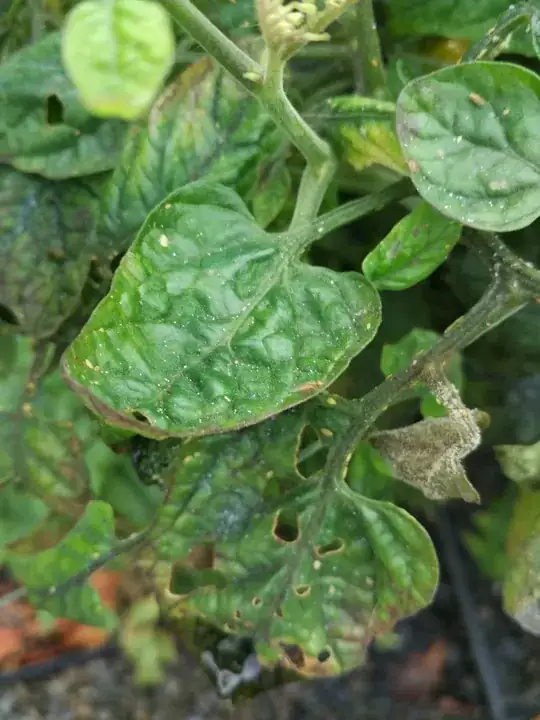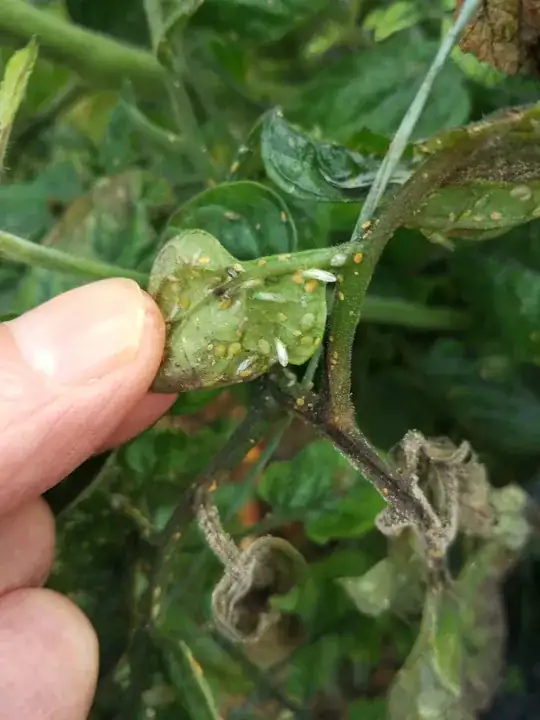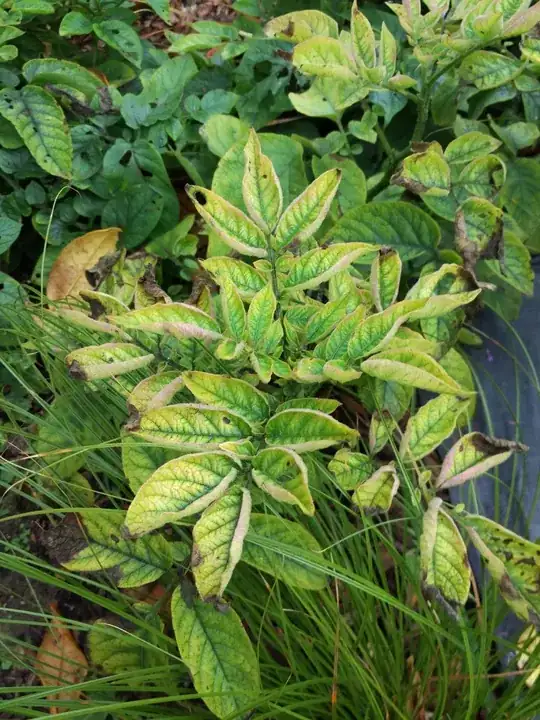I noticed these sugary white granules on my tomato leaves a couple of months ago, and saw some insects which I thought were aphids but didn't look closely. Now it looks as though my potatoes are infected.
The tomato potato psyllid (TPP) arrived in this country in 2006, presumably from the USA, and I was quite unfamiliar with it. I suspect that this is my problem.
Sugar granules on tomato leaf

Nymphs and winged adults

Tomato caterpillar lying amongst psyllid sugar

Potato leaf curl

I'm going to remove and bag up the infected plants, but a couple of weeks ago before I realized what was wrong I pulled the spuds out and put them into the compost.
Do I need to remove them from the compost pile or is it too late? And should I remove all guest potato plants from the garden, infected or not?